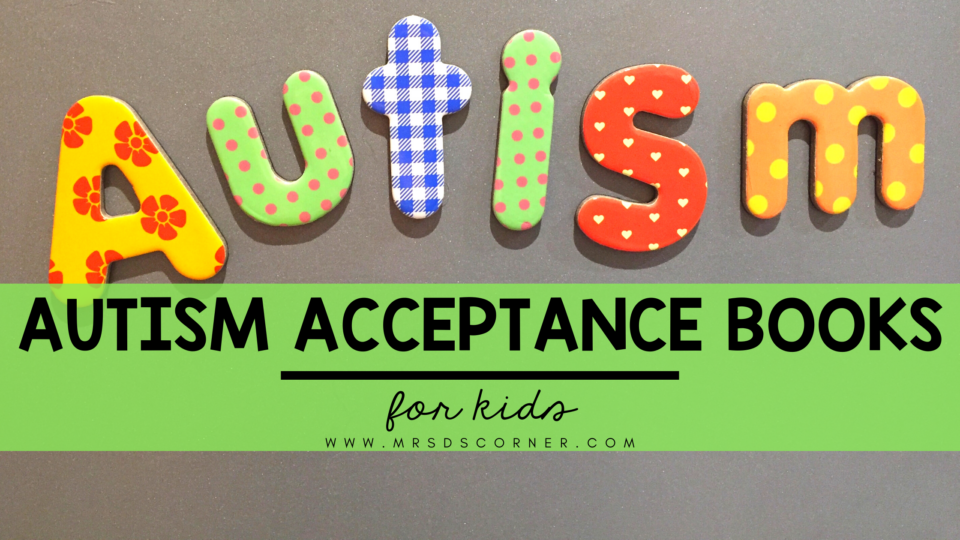April is Autism Acceptance Month, a time to celebrate and promote understanding and acceptance of individuals on the autism spectrum. For children with autism, books can serve as powerful tools for learning, self-expression, and empowerment.


In this blog post, we will explore the significance of kids’ books in fostering autism acceptance and inclusivity. We will delve into the benefits of reading for children with autism, recommend some must-read books, and provide tips for parents, educators, and caregivers on how to effectively engage children with autism through literature.
The Power of Reading for Children with Autism
Reading can be an incredibly valuable activity for children with autism. Here are some ways in which books can positively impact their lives:
Enhancing Communication Skills
Many children with autism struggle with verbal communication. Books provide a platform for improving language skills, vocabulary, and comprehension. Through exposure to diverse characters and storylines, children can learn to express themselves more effectively.
Promoting Social Skills
Books offer opportunities for children with autism to learn about social interactions and emotions. By reading stories that depict various social situations, they can develop empathy, understanding, and the ability to navigate social dynamics.
Stimulating Imagination
Imagination and creativity can flourish through reading. Books allow children with autism to explore new worlds, characters, and ideas, fostering their imaginative thinking and opening up new possibilities for self-expression.
Building Self-confidence
Identifying with characters who share similar struggles and experiences can boost self-esteem in children with autism. Seeing characters overcome challenges can inspire them to believe in their own abilities and strengths.
This post contains affiliate links to products that you might enjoy.
25 Must-Read Books for Children with Autism
Here are some highly recommended (aka teacher favorites), books that promote autism acceptance and understanding.
Ian’s Walk: A Story About Autism
by Laurie Leary
Autistic Legends Alphabet
by Beck Feiner
The Reason I Jump
by Naoki Higashida
Uniquely Wired
by Julia Cook
The Beach is Loud
by Samantha Cotterill
Too Sticky! Sensory Issues with Autism
by Jen Malia
My Brother Charlie
by Holly Robinson Peete and Ryan Elizabeth Peete
A Friend Like Simon
by Kate Gaynot
In My World
by Jillian Ma
My Autistic Mama
by Kati Hirschy
My Brother Otto
by Meg Raby
Grant the Jigsaw Giraffe
by Julie Manier
All My Stripes: A Story for Children with Autism
by Shaina Rudolph and Danielle Royer
Do You Want to Play?: Making Friends with an Autistic Kid
by Daniel Share-Strom
I Will Light It Up Blue
by Kerry Magro
Autism: I See Things Differently
by Pat Thomas
The Autism-Friendly Guide to Periods
by Robyn Steward
The Awesome Autistic Go-To Guide: A Practical Handbook for Autistic Tweens and Teens
by Yenn Purkis and Tanya Masterman
Andy and His Yellow Frisbee
by Mary Thompson
The Girl Who Thought in Pictures
by Julia Finley Mosca
Why Is He Doing That?
by Rachael M. Cuellar
Zippy’s Special Gift
by Therese Van Ryne
Masterpiece
by Alexandra Hoffman
My Brother’s Keeper: A Story About Autism
by Dina Mountney
A Day with No Words
by Tiffany Hammond
Tips for Engaging Children with Autism through Books
To make the most of reading experiences, here are some helpful tips.
Create a Calm Reading Environment
Find a quiet space free from distractions where the child feels comfortable and relaxed. Minimize sensory stimuli such as bright lights or loud noises that may cause distress.
Use Visual Supports
Incorporate visual aids such as picture cards or storyboards to enhance understanding and engagement. Visual supports can help children with autism follow the storyline and connect with the characters more effectively.
Encourage Active Participation
Encourage the child to interact with the story by asking questions, making predictions, or relating the events to their own experiences. This promotes critical thinking and active engagement.
Choose Books with Diverse Characters
Select books that feature diverse characters, including those with disabilities or neurodivergent traits. Representation matters, and seeing themselves reflected in literature can empower children with autism.
Provide Multisensory Experiences
To further engage children with autism, consider incorporating multisensory experiences into reading sessions. For example, use tactile props or objects related to the story to enhance their sensory engagement.
Autism Acceptance Month is a time to celebrate the unique talents and strengths of individuals on the autism spectrum. By utilizing the power of books, we can foster understanding, empathy, and inclusivity in our communities. Through engaging stories and relatable characters, children with autism can find solace, inspiration, and a sense of belonging. Let us continue to support autism acceptance through the wonderful world of literature.

